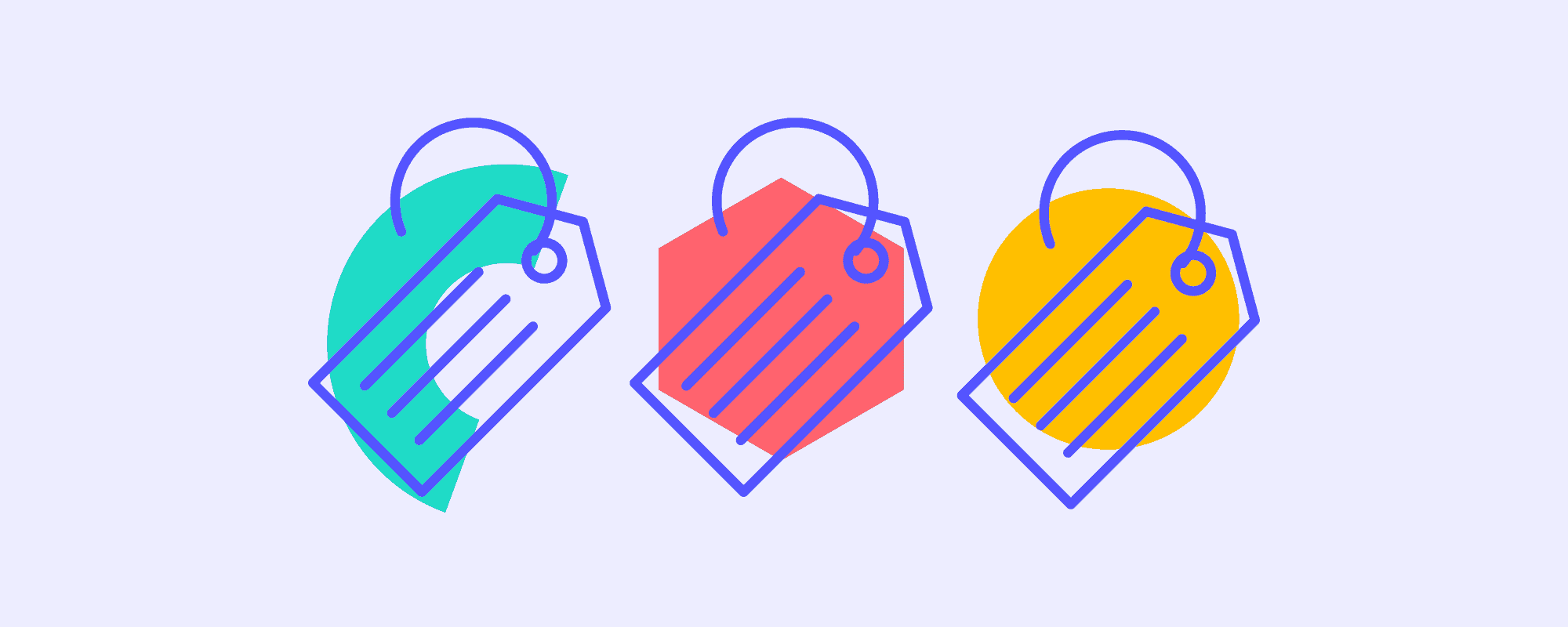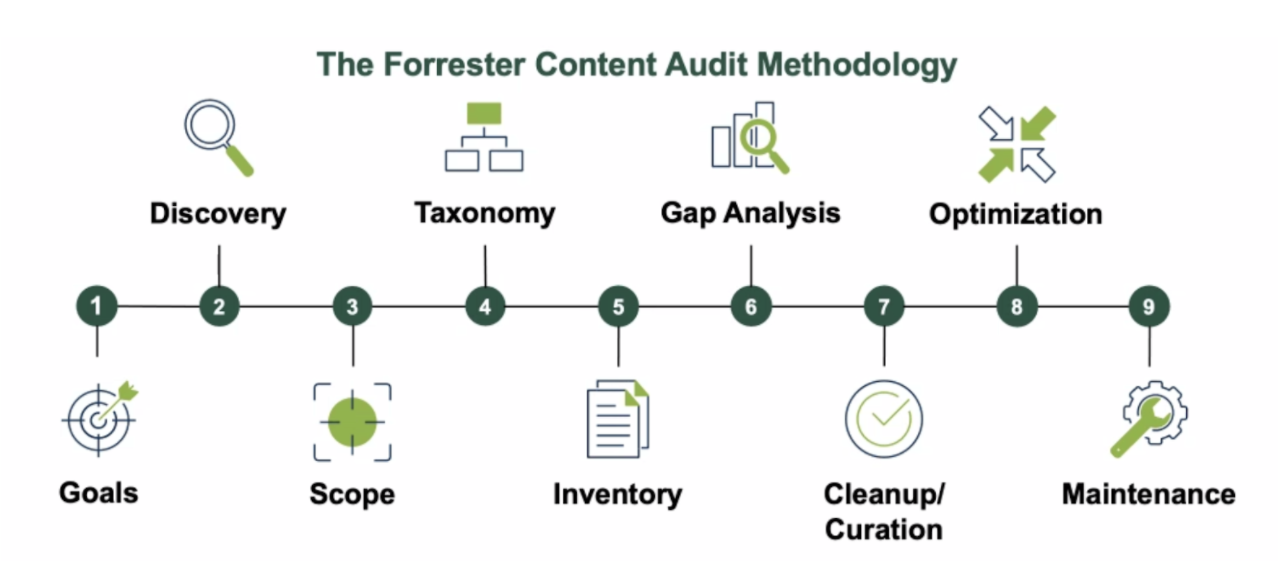
Forrester x PathFactory: Content Tagging Best Practices (And How To Get Started)
Most B2B companies are doing a good job regularly tagging their content, but there are ways to improve the quality of this important metadata.
In Forrester’s 2022 Global Marketing Survey, it was reported that 49% of B2B marketing decision makers indicate that improving content targeting and personalization capabilities is their number one focus over the next 12 months. Coupled with the fact that only 10% of B2B marketing organizations rate their content’s performance and operations as advanced, it’s clear that there is a lot of room for improvement. Many assume content tagging is a big undertaking, and something that can’t be done well. That’s why PathFactory partnered with Forrester to host a webinar discussing content tagging best practices, how to improve the quality of your data, and of course, how to get started.
PathFactory uses AI to track and analyze multiple engagement metrics for unlimited content assets, providing valuable insight into how B2B companies approach content metadata. Looking closer at how B2B companies manage their content topic tagging, we found that while nearly two thirds of content pieces are actually tagged with a topic, nearly half of those tagged content pieces are tagged with only one topic. To add to that, 37% of topics are tagged to a single asset. This means that:
- B2B companies aren’t getting the full picture. While companies are doing a decent job using the topic tagging feature, there is still a third of companies out there that aren’t leveraging this important piece of metadata
- For those companies that are using the topic tagging feature, the data isn’t as rich as it could be. For instance, some companies are tagging every piece of content in their library with the same topic which is a waste of resources (because if every content piece is tagged with the same tag, are you really getting valuable insights from it? Probably not).
- Companies that are using the topic tagging feature are attributing 2.4 topics to each piece of content, on average. While it’s beneficial to the company to use this feature, the data you get out of content intelligence platforms is only as good as the data you put into it; this is why it’s important to have a thoughtful variety of topics to choose from. Our enablement team recommends that each piece of content should have at least two tags attributed to it, and that four tags are normally considered the gold standard. We’ll talk more about content tagging in a bit.
Can a topic really be a topic if nearly 40% of your assets are tagged with it? In theory, yes. But you’re not going to learn anything new about your content this way.
In our analysis we found that, for many B2B companies, the quality of content topics is low. Things like human error can have impacts on the quality of the data you’re getting from your content. Imagine if multiple people are responsible for tagging content; without proper standardization you risk having messy metadata (think “ebook” vs “e-book”, or “case study” vs “case-study”). While a content intelligence platform can help streamline your content tagging and analytics, a human touch is still required to keep things consistent.
Another thing to keep in mind: a piece of content tagged with one topic is almost as bad as not tagging it at all. Our analysis found that nearly 30% of assets were tagged with only one topic, while only 12% of content pieces have more than four topics tagged. With the shift in marketing towards more personalization, content tagging is the best way to develop deeper insights about the content your customers want to read. If you’re just looking at one topic tag, what are you comparing this data set to?
How can I become more content intelligent?
Whether you have a state-of-the-art content intelligence platform, or you’re using an Excel grid to manage your content library, Forrester says there are three building blocks to content intelligence success.
Taxonomy:
Taxonomy is a system- or human-generated way to classify content. It’s crucial to any content strategy, but Forrester found that only 24% of B2B marketing organizations have a universal taxonomy. That means that a third of these organizations are flying blindly when it comes to tagging and getting insights from their content. Your taxonomy should help different audiences find what they’re searching for, with little human interference.
Consider what Forrester calls “The 3 A’s”: Access, Automation, and Analytics. Access helps diverse audiences find content, while automation enables systems to share and promote content without human intervention. Analytics bring everything together, and allow you to measure your content and gauge the success of your efforts in the access and automation stages.
Tagging:
Tagging refers to a set of data that describes content, and is a variable that gives you insight into how your visitors consume your content. As you focus more on delivering individual content experiences, your approach to content tagging will make or break how personalized your content recommendations can get.
There are a number of common pitfalls when it comes to tagging content, and the two repeat offenders are over-tagging and under-tagging. People will often over-tag their content because they want to cast a wide net and reach as many readers as possible; in reality readers searching for something in particular want to avoid seeing a large volume of irrelevant content. In the case of under-tagging, you risk not having your content visible in search results—you have the content, but no one can find it!
Next time you’re ready to tag a piece of content, make sure you’re following Forrester’s best practices for content tagging individual assets. Your tags should include:
-
Buyer’s journey stage
- Be specific about what stage your content speaks to. It’s rare that a piece of content is used for every stage of the journey
- Use data to revisit assumptions around what content is being consumed at each stage
-
Content format (asset type)
- Use for each asset, but be sure to standardize your format types
-
Personas
- Make it easier for key roles in the buyer committee to find your content
- Use data, customer, and employee feedback when developing your personas
-
Offerings and topics
- Only use this tag if the content is specifically about the offering to avoid a large volume of irrelevant content
Curation:
Once your content is tagged and published, content curation comes into play. Content curation encompasses everything from content audits and inventory, to communicating results. Many B2B companies think the job is done when you press the ‘publish’ button, but curation is arguably the most important part of the process because it helps you sustain your content marketing efforts. It’s a continuous process that helps you learn more about your readers.
It’s a big job, so it’s advisable to designate someone as your lead content curator who can do periodic checks and corrections on your content tagging. Don’t forget: consistency is key and is the only way to guarantee a clean data set.
“When it comes to your content, it’s worth the time and effort to perform ongoing checks because you’ll see an improvement in quality over time. You can continually evolve your taxonomy, tagging, and curation to make the best use of content intelligence. It’s an ongoing effort—and it’s done with a team.”
— Lisa Gately, Principal Analyst, Forrester
Before you jump into developing new content, consider conducting a content audit to help you understand the content you already have. Forrester recommends this 9-step process when conducting a content audit, which will take you from setting goals for your content, all the way through to maintaining the momentum you’ve got. If you’re curious about how to conduct your own content audit, skip to the 25-minute mark on the webinar for more insight from Forrester’s Principal Analyst Lisa Gately on how to get started. 
This blog post isn’t meant to make you feel like you’re at the beginning of an uphill journey towards best-in-class content tagging. It doesn’t have to be perfect, it just has to work for you. While B2B companies know they need to invest more time and effort in improving their content targeting and personalization abilities, they might not know that content tagging is a great place to start. Now is as good a time as any to start thinking about ways to optimize your content tagging, and discover a new layer of insights about your visitors.

